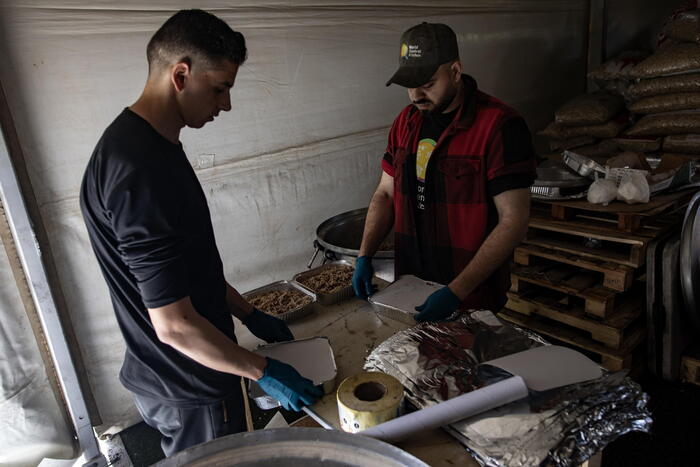Rescuers evacuate people from a Guatemalan town affected by Hurricane Julia on October 10. HANDOUT (AFP)
Death has touched Central America again in the form of a devastating storm.
After a catastrophic weekend, Central Americans begin to count their dead and the destruction caused by Hurricane
Julia
, which hit the region with sustained winds of more than 70 kilometers per hour and abundant rainfall.
The authorities have reported that the cyclone has left at least 28 dead, most of them in Guatemala, flooded entire towns, destroyed hundreds of houses and significant damage to roads and other infrastructure.
“San Miguel was under water”, headlined
La Prensa Gráfica
, from El Salvador, on Tuesday, which gave an account of the disaster caused by
Julia
in that eastern municipality of the small Central American nation.
The images of the town are apocalyptic: houses flooded to the roof, overturned cars, trees floating in a sea of mud, sick people being transported by caring neighbors and desperate people carrying what little they could save from the storm, including pets. .
President Nayib Bukele traveled to Comasagua, 30 kilometers southwest of the capital, where a landslide left five soldiers dead.
"It is a tragic day for our country," said the president.
Julia
It has left a total of 10 dead in El Salvador, in addition to significant damage that has affected the electricity supply in some regions of the country.
"It was a deluge with strong winds that kept us sleepless and left us without electricity," Marina Pacheco, a resident of the southeastern department of Usulutan, told Agence France Presse.
Landslides were also deadly in Guatemala, where authorities have reported that 8 people have died after a landslide in Santa Eulalia, an indigenous community located in the west of the country.
Guatemala registers a total of 14 deaths and almost half a million victims, but
Julia 's fury
It also left serious damage to the country's infrastructure, including more than 600 houses damaged, 86 schools affected, almost 50 roads and nine bridges destroyed.
President Alejandro Giammattei has declared a "state of calamity" while soldiers and rescue personnel continued their evacuation efforts.
The president has also decided to suspend classes nationwide and his government has warned of damage to corn and bean crops, staple foods for Guatemalans.
The damage has also been significant in Nicaragua, where the Daniel Ortega regime counts 7,500 people affected, 3,000 homes flooded, another 2,000 damaged, and 78 rivers overflowed.
Despite this destructive wake, so far the Nicaraguan authorities have not lamented any fatalities.
Central Americans may be used to the periodicity of the scourge of phenomena like
Julia
, increasingly brutal, but what they lament is the vulnerability of a region that is harshly suffering the onslaught of these storms.
The president of Honduras, Xiomara Castro, had reported before the hurricane hit that her government had mobilized the "best technicians" so that, together with mayors, ministers and local officials, they would prepare to face the emergency that the cyclone would undoubtedly cause, but Despite this effort, Castro made it clear that the attack could be fatal and put his country in the hands of Providence.
"I ask for God's protection," Castro said.
All in all, in Honduras the authorities register only two people dead due to the strong waves generated by Julia's fury, although the count of losses still continues, while large areas of the country are still flooded and more than 9.
With the calm after the fury of the hurricane, the time will come to repair roofs, rebuild walls, remove mud from houses, rebuild bridges and roads, and make schools decent.
The Central Americans, like an army of worker ants, will try to rebuild their devastated peoples, although many, resigned, will also see migration as a last resort in the face of the tragedy, inefficiency and indolence of their authorities.
It already happened in 2020, when hurricanes
Eta
and
Iota unleashed
their fury on the region, leaving more than 200 dead, dozens missing and a grotesque footprint of destruction.
After the storm, many Central Americans who lost everything may only have left, as Honduran President Castro did, to ask her God for protection.
Subscribe here to the EL PAÍS América
newsletter
and receive all the key information on current affairs in the region






/cloudfront-eu-central-1.images.arcpublishing.com/prisa/IENEJXTRFVGVRNVJU4NDNBTX64.jpg)